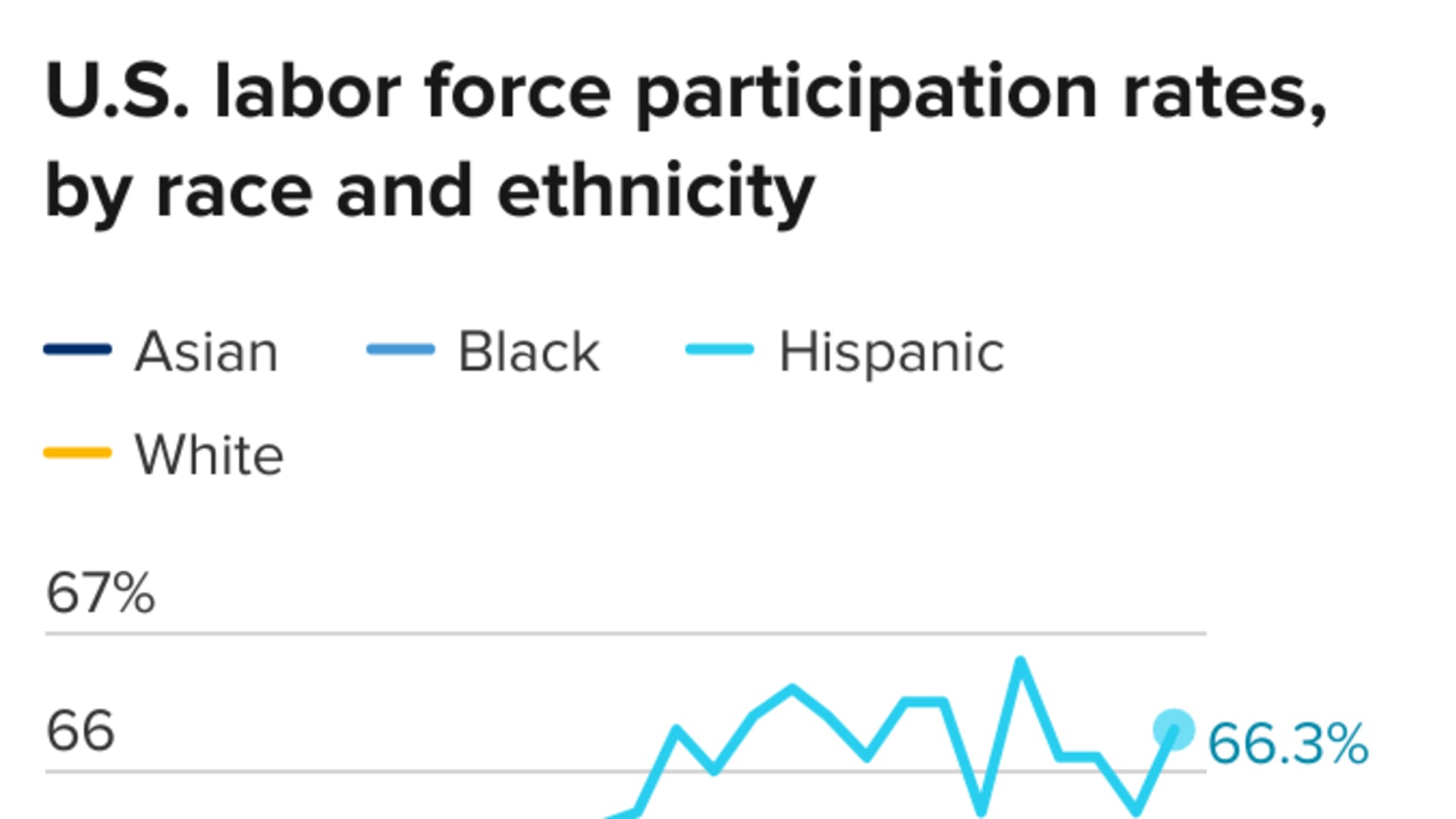
The U.S. unemployment rate declined overall in December, but rose for Black women and Hispanic men, according to the latest nonfarm payrolls report.
Black women saw unemployment increased to 5.5% last month, up 0.3 percentage points from 5.2% in November, data from the Labor Department showed Friday. Overall, Black employment held steady at 5.7%, while the unemployment rate for Black men actually declined to 5.1% from 5.4% last month.
Meanwhile, Latino men saw unemployment rise to 4% in December, an increase of 0.4 percentage points from 3.6% the prior month. The overall unemployment rate ticked up to 4.1% from 4.0%. Unemployment among Latino women also ticked up to 3.7% from 3.6%.
Those figures bucked the trend in the broader economy, which showed unemployment in the U.S. fall to 3.5% from 3.7%. It was 0.2 percentage points below consensus expectations from the Dow Jones.
We're making it easier for you to find stories that matter with our new newsletter — The 4Front. Sign up here and get news that is important for you to your inbox.

"What we've really seen over the course of the last nearly three years since the pandemic hit, is that we've regained, in terms of aggregate numbers, all of the jobs lost," said Michelle Holder, a distinguished senior fellow at Washington Center for Equitable Growth.
"But the sort of industrial mix has changed, and has kind of impacted what we're seeing with regard to the distribution of joblessness, by gender, race and ethnicity. And it's really disaffecting Black women and Latinx men," Holder added.
Money Report
A stronger-than-expected December jobs report continued to suggest a robust labor market, even as lighter-than-expected wage growth fanned some investor hopes that inflation may be coming down.
Nonfarm payrolls rose by 223,000 in December, more than the Dow Jones estimate of 200,000. Meanwhile, average hourly earnings rose 0.3% for the month and gained 4.6% from a year ago. These are compared to estimates of 0.4% and 5% increases.
"The labor market clearly remains strong," said Elise Gould, a senior economist at the Economic Policy Institute. "We are now seeing that the household survey and the payroll survey are showing similar signs of strength, and wage growth is looks to be coming down."

Still, parts of the economy where Black women are overrepresented showed little improvement, or failed to regain their levels from before the pandemic, according to Holder. Government employment was little changed, adding just 3,000 jobs in December. Notably, state government education employment dropped by 24,000 because of strikes from university employees, according to the Labor Department.
Both Black women and Latino men are well represented in the leisure and hospitality sector, according to Holder. The sector significantly added jobs in December, but remains below its pre-pandemic levels. Employment in the sector rose by 67,000 last month, but is still 932,000, or 5.5%, below what it was in February 2020.
"Those are two industries that have not recovered well during the pandemic," Holder said. "This is what is constraining Black women's ability to get back to the state that they were with regard to the American workforce before the pandemic."






